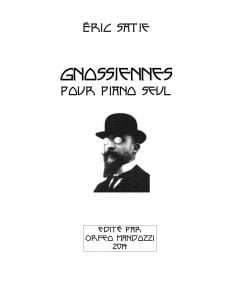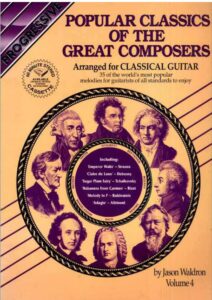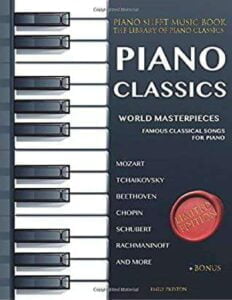Table of Contents:
Satie Sheet Music Library #smlpdf

Best Sheet Music download from our Library.
Erik Satie – Cinema – Complete Sheet Music (Full score)
Gymnopédie No 1 – Erik Satie
SATIE – Gnossienne No. 1-6
Satie – Je te veux (Sheet music for piano)
Satie 6 Gnossiennes Ed. Mandozzi Piano seul
Satie Gnossienne No 1 Guitar
Satie Gnossienne 1 Guitar
Satie Gnossienne 5
Satie Gnossienne5
Satie Gnossienne6
Satie, Erik 3 Nocturnes
Satie, Erik 3 Gymnopédies pour Piano
Please, subscribe to our Library. Thank you!

Erik Satie – The Essential Collection
Track List:
1. Jazzopédie – 0:00 2. Sarabande No.1 – 3:10 3. Je te veux – 9:45 4. Gnossienne No.1 – 16:28 5. Gnossienne No.2 – 21:09 6. Gnossienne No.3 – 24:16 7. Du fils des étoiles – 28:03 8. Gymnopédie No.1 – 32:05 9. Gymnopédie No.2 – 35:48 10. Gymnopédie No.3 – 39:34 11. Embryons Desséchés – 42:11 12. Morceau en Forme de Poire – 43:36 13. Valse Ballet – 47:21 14. Aperçus Désagréables – 49:09 15. Ogives – 50:22 16. Sonatine Bureaucratique – 52:19 17. En Habit de Cheval – 56:23

Please, subscribe to our Library. Thank you!

What kind of music composed Erik Satie?
One hundred and fifty-three years have passed since the birth of Alfred Eric Leslie Satie (1866-1925), the enigmatic French composer who decided to adopt his middle name and paternal surname as his stage name1. Decision that could have marked the life of this composer, guiding him along an unconventional path in music.
In general terms, Satie has been understood as a different, brilliant and unique composer, mainly because of the innovative way he approached his musical creation, but at the same time an attempt has been made to understand him from a traditional approach, taking as reference the principles and values musicals linked to the Germanic classical-romantic aesthetic. The fact is that Erik Satie does not subscribe to these traditional categories, because his artistic-musical proposal escapes any mold, canon or musical thought that merges into that traditional aesthetic. In this sense we want to review the way in which the composer faced music in a subversive way. Firstly, we will review what antecedents exist regarding the assessment that Erik Satie has had by the academy, with the purpose of contextualizing the meaning that has been given to him as a musician and as a person from a critical approach to canonical discourse.
In accordance with the particularity of Erik Satie, any reference that can be made regarding his music becomes a real challenge. For this reason, it would be more appropriate to let the music speak for itself based on the aspects that the composer discursively exposes in the pieces. Fundamental in them is the play of images presented in a suggestive way, through the use of agogic and dynamic images, either to try to understand something about the subject-animal to whom these preludes were dedicated, or, as Satie questions, to observe with the most respectful silence showing a complete attitude of submission, of total inferiority.
According to the number of aesthetic-musical dimensions that Erik Satie stresses with respect to the learned tradition of classic-romantic and German influence, such as orchestration, predominant rhetoric, timbre, form/structure, meter, harmony, melody, agogic, character, role of the interpreter and receiver, his perspective accounts for a type of musical subversion, since it proposes a musical aesthetic in constant change and without a canonical reference. A matter that he proposed as a thought, and also occurred in reality, since, effectively, there is no Satie school, nor another composer with Satie’s sound. Rather, he opened a path of artistic emancipation based on multiple artistic-musical concepts of which he was a precursor: furniture music, surrealism, the prepared piano, Dada theater, minimalism, surrealist cinema, satire based on musical language and musical discourse.
Although he does not completely break with learned tradition, subversion is manifested in his work by going back to musical styles and periods prior to the German classic-romantic canon, mainly the Middle Ages and the Baroque, as references to approach his creation from there, which he reworks from progressive elements.
The evaluations about Erik Satie usually start from traditional musical language, based on the dominant canon and social conventions, which is absolutely opposite to the composer’s own perspective. For this reason, when making any assessment regarding Erik Satie it would be necessary to rethink and resignify his work from an awareness regarding the processes that occur within hegemonic logics, both musical and social, assuming this as part of a complex framework from which to start. .
Although the link between Satie and cynicism could be considered a cataloging gesture and, consequently, would become another label to value the composer, this connection is justified precisely because the assumptions of cynic philosophy represent the summum of what It could become the most libertarian ideology of Western thought, whose objective is to oppose any hint of conventionalism.
In this sense, the life and work of Erik Satie are two dimensions that are presented in a single way of being; a lifestyle (in music, writing and thought) in accordance with Cynic philosophy which, rather than being an abstraction, is a practical philosophy evidenced in the life of a Cynic musician.
The large number of aesthetic-musical dimensions that are put in tension in Satie’s work in relation to traditional aesthetics could account for this gesture of musical subversion that we want to highlight. From this perspective, then, the relative validation that the composer’s artistic and musical proposal has had could be discussed, at least by part of the academic discourse that we have reviewed.
Musical impressionism was an aesthetic that sought to renew the artistic language from a specifically French sound, achieving an important emancipation from the romantic language, being an interesting alternative to German aesthetics. However, Impressionism does not completely oppose the German tradition, as Erik Satie does from a particular aesthetic (as we will review later). Impressionism was able to dialogue with several musical features typical of the German tradition, such as the orchestral treatment, the approach to structuring (composition) of musical works, and the use of a harmonic or contrapuntal base that is not underestimated, for its part. essential, to support impressionist works. Therefore, according to its proximity to the romantic language, impressionism could not be considered a style that opposes the classical-romantic tradition, because it does not seek to subvert the aesthetic bases of said tradition.
